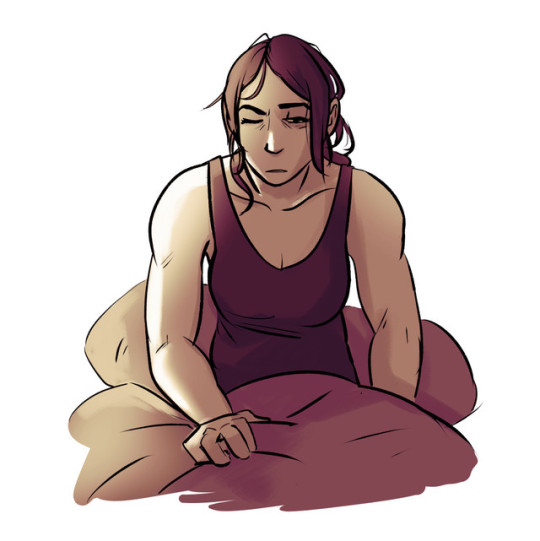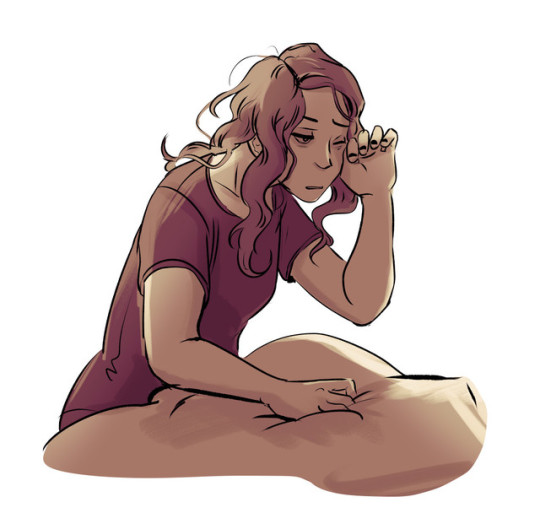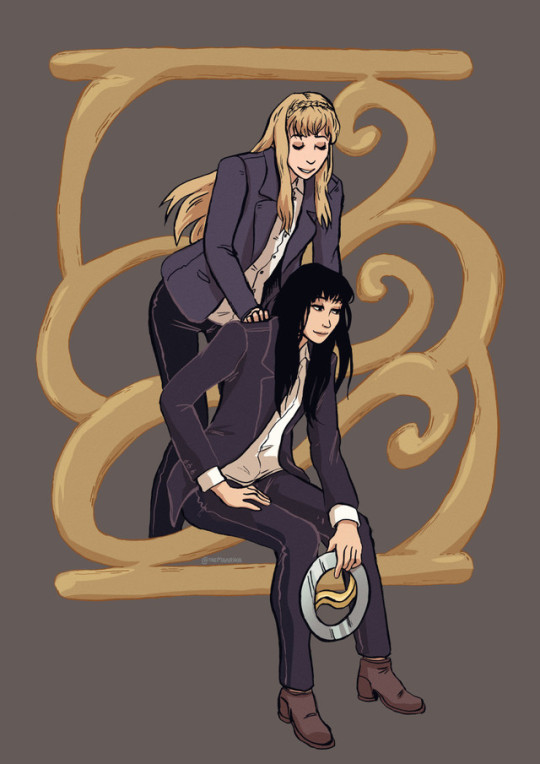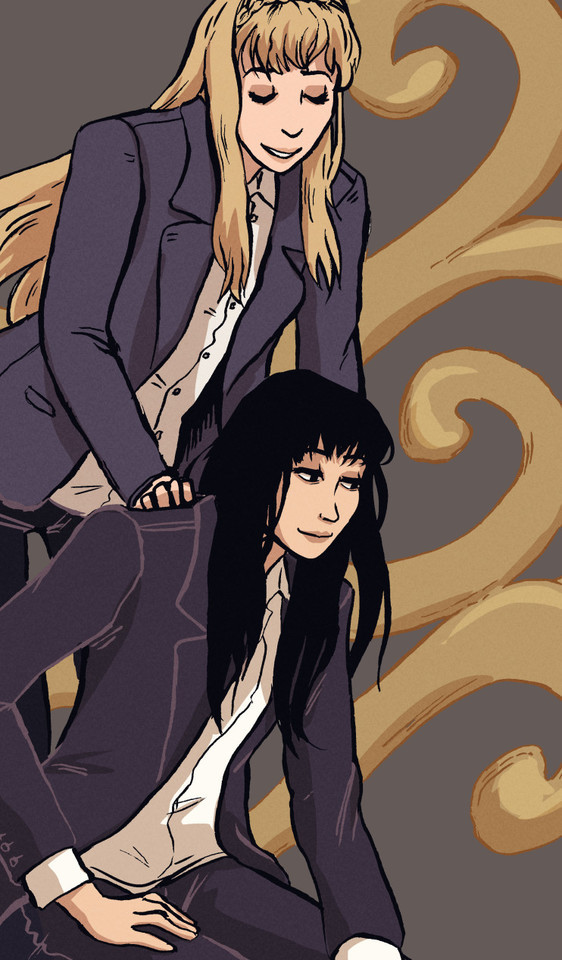Don't wanna be here? Send us removal request.
Note
Regarding “work backwards to derive an IC rationale for why those were the setting's standard adventuring professions” I think early D&D is an interesting case because it often just did not attempt to provide any justification. It does not even try to explain why monks go into dungeons looking for treasure: it’s a game about going into dungeons and looking for treasure, you’re assumed to be on board with that. The Monk is just one of the fancy ways you can go about doing it.
I want to say the concept of a “standard adventuring profession” is itself working backward to derive an IC rationale for D&D’s classes and mode of play by establishing that adventuring is a thing and there are professions for doing it.
I apologise if you've already answered this, but I tried searching your blog and I'm unsure if you haven't or if it's another example of Tumblr's amazing search system.
I was talking with a friend recently about how much of a culture clash the Monk Class is compared to the rest of Dungeons & Dragons and was wondering if there is a coherent reason for their original inclusion. I'm aware that they're largely influenced by Shaolin monks as depicted in Hong Kong cinema in the 70's/80's as compared to the Sword and Sorcery stuff most of the rest of D&D takes influence from.
Basically, my question ultimately boils down to, "Is the Monk Class there purely because of an original player wanting to rule of cool their way into playing something wildly out of genre, or is there a stronger link between Sword and Sorcery and Hong Kong cinema that could have organically resulted in the Monk Class joining the rest of the classes?"
A lot of the link between the two was simply a matter of time and place. The kung fu craze hit North America at just about exactly the same time as the sword and sorcery revival that gave us films like Clash of the Titans and Beastmaster and The Sword and the Sorcerer and Dragonslayer and Krull – not to mention the Arnold Schwarzenegger Conan adaptation, which revived popular interest in first-wave sword and sorcery literature – so there was a lot of it going around. Analysis of early Dungeons & Dragons as a product of its media influences often overlooks that it was largely drawing on what was trendy in American popular media in the 1960s, 1970s and 1980s. Even the tonally incongruous Lord of the Rings references weren't a deep cut; while the books were originally published in the 1950s, they'd experienced a strong resurgence in the 1970s, putting them firmly in the popular consciousness at the time that D&D was being developed. All this being the case, it's not surprising that early D&D was also substantially influenced by Hong Kong action cinema.
That said, the reason the monk character class in particular (i.e., as opposed to kung fu media influences more generally) is there is allegedly because one specific guy in one of the game's early playtest groups really, really wanted to play as Remo Williams from Warren Murphy and Richard Sapir's The Destroyer; several of the class's signature abilities are direct references to powers Williams exhibits in the course of the novels. Remarks from folks who worked at TSR at the time have pointed the finger at Brian Blume as the Remo Williams fan in question, though accounts are conflicted whether Blume was actually an uncredited contributor to Dave Arneson's Blackmoor (1975), in which the class makes its first proper appearance, or whether Blume's interest merely prompted its inclusion.
This is the case for the character archetypes in a lot tabletop RPGs of that era; instead of trying to work out what classes "ought" be be present, authors would simply start with the types of characters their playtesters actually wanted to play, often based on specific popular media characters, then work backwards to derive an IC rationale for why those were the setting's standard adventuring professions. Other examples from D&D in particular most obviously include the Ranger (based on Tolkien's Aragon, naturally), but also the Paladin (principally inspired by Holger Carlsen from Poul Anderson's 1961 isekai novel Three Hearts and Three Lions, also the source of D&D's goofy regenerating trolls), the Assassin, back when it was still a separate character class (probably mainly based on the Assassin Caste from John Norman's Gor), and even the Wizard to a large extent (less Gandalf than you'd think: a large portion of D&D's iconic wizard spell list is lifted directly from the 1963 Vincent Price film The Raven).
(I often think that modern indie RPGs could benefit from reviving this approach. Like, fuck textual consistency – just pick half a dozen of your favourite popular media characters without regard for the compatibility of the source material and work backwards to explain why these six random assholes are your game's playable archetypes!)
3K notes
·
View notes
Note
On the general topic of skewed dice distributions, weighted dice is one option but skew is also easily introduced by rolling more dice and discarding some. For example, rolling three d100s and picking the two highest produces a distribution with a range of 2-200, but a mean of 126 rather than 101.
(This does give some approximate solutions to this specific problem like [highest 2 of 3 d100] +2d24+1d6-4, which has a mean of 150.5 and a range of 1-250, but like your suggestion these aren’t really convenient solutions.)
Any ideas for creating a dice table to produce numbers between 1 and 250 which tends towards an average of 150? For context, I'm trying to produce a table for number of people on board a train
A table with 250 entries is trivial, but that off-centre average is going to give you grief; any sum of fair, evenly distributed dice is going to want to peak around the centre of its range, or around 125 in this case. In order to push the peak off centre using only dice, you need loaded dice – that is, dice where some results are more likely than others.
For example, rolling 36d10, but reading the tens as zeroes and any other result higher than 7 as 7 (i.e., effectively a die with faces reading 0, 1, 2, 3, 4, 5, 6, 7, 7, 7) gives you a range of 0–252, with a distribution that peaks around 151, close to what you're looking for.
Frankly, in a case like this, unless it's very important for every possible number of passengers to be represented, I'd probably just use a d100 lookup table (i.e., with each entry mapped to a specific number of passengers), and strategically skip numbers to yield the desired distribution. The fact that it would be impossible ever to generate a train with exactly 137 passengers (or whatever) would be a small price to pay for enormously greater convenience.
328 notes
·
View notes
Text
The mention of how illustrations should be messed up stand out to me because OD&D already has some problems there: The barbarian's sword on page 16 of Men & Magic just cuts off, presumably where the scissor cut through the illustration or the comic panel it's traced from ended. and on some images the production process has turned a thin or faint line into no line at all (e.g. "Witches", p. MM17, "Amazon" p.MM27). The images feel just one or two steps removed from being cut-outs overlaid on the empty parts of the page during Xeroxing.
The scan I'm looking at is typed with a non-monospaced font, which suggests it's not actually made on an actual typewriter and then ran through a Xerox machine, but I know there's at least one copy that in spite of not being monospaced uses "--" in place of an em-dash, which is definitely a typewriter convention, and sometimes the underlining of a heading looks like it was made by an actual pen against an actual ruler.
In some ways I feel like late 1980s zine game is basically the production process of OD&D, only it tries very hard to look competent rather than shitty.
I love this alternate universe "what if OD&D had been a shitty late 1980s zine game" thing a certain segment of the OSR crowd has going on, but my problem is that even when they're going out of their way to emulate the characteristic jank of the era, the production values are way too slick. If we're really aiming to capture the spirit of the times, where's the grotesque line breaking and the paragraphs that end in mid sentence? Where are the illustrations that were clearly drawn on line-feed printer paper in ballpoint pen, complete with visible edges where they were cut out and pasted into the master document? Where are the layouts where no two pages have the same margins? Where are the parts where the text is randomly canted at about a five degree angle off horizontal because somebody fucked up when feeding that particular page into the Xerox machine and couldn't be arsed to redo it? I want an end product that's barely readable, is what I mean to say.
746 notes
·
View notes
Text
A similar thing happened to me when I first played Fallout: New Vegas. If you bring Boone along to Caesar's audience, there is no audience, only you and Boone slaughtering the slaving monsters to a man, Caesar included. The result is that Caesar never exposits about why the Legion are there or who Lanius is, which makes huge portions of the context for one of the game's central, climactic conflicts, where the Legion led by Lanius shows up for a big fight, simply unexplained. It made for a very unsatisfying climax, all because I happened to have brought Boone along to Caesar's audience and did not particularly mind killing the Legion.
Lore-unfriendly companion who forcibly exits the menu screen to complain that they're bored if you spend more than five seconds reading an item description.
17K notes
·
View notes
Photo
Shoot!

483 notes
·
View notes
Video
I think a good quarter of these are only supposed by the most tenuous of evidence if not outright unproven allegations, with some being outright conspiracy theories:
France 1965 refers to an alleged attempt by the OAS to recruit the CIA to kill de Gaulle, for which there is no evidence whatsoever the CIA actually were interested in doing: https://www.theguardian.com/world/2015/jun/16/general-de-gaulle-cia-assassination-plot-1975
Greece 1967 was the coup that put a military junta in power. US involvement has been alleged but never proven: http://www.hartford-hwp.com/archives/62/411.html
Australia 1974-1974 refers to the 1975 Australian constitutional crisis, with CIA involvement being essentially a conspiracy theory: https://en.wikipedia.org/wiki/1975_Australian_constitutional_crisis#Alleged_CIA_involvement
Portugal 1974 was the Carnation Revolution, a military coup in fascist Portugal that soon turned into a popular revolution. There’s a conspiracy theory alleging that the US intervened to prevent a communist group from taking power during the unrest, but again, there’s little evidence for any of this.
Zaire 1975 is especially weird, because the US was at the time supporting Mobutu, its dictator. There was an accusation that ‘Yankees’ had tried to support a coup, but again, no evidence: https://www.nytimes.com/1975/06/19/archives/6-zaire-officers-held-as-plotters-other-arrests-reported-as.html
Venezuela 2019 has, of course, also not actually been proven.
So basically, this is someone pushing conspiracy theories.
tumblr

my favorite tik tok content
65K notes
·
View notes
Photo
Always reblog Root & Shaw!


301 notes
·
View notes













